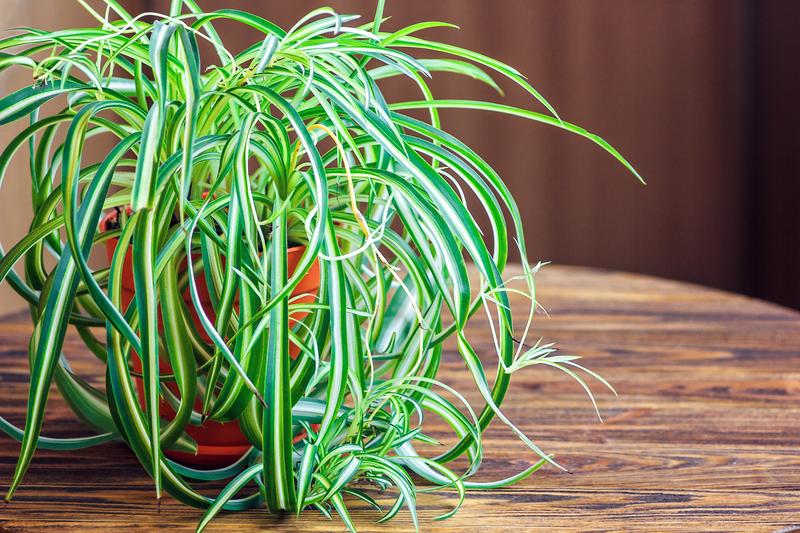Sculpting with Shrubs: Hedge Trimming Tips
Posted on 04/07/2025
Hedge trimming is both an art and a horticultural science. By sculpting with shrubs, you can create stunning, orderly landscapes that elevate the beauty and value of your outdoor spaces. Whether you are a gardening novice or a seasoned landscaper, learning the best ways to trim and shape hedges is key to garden success. In this complete guide, we'll cover insider hedge trimming tips, the best techniques for pruning, essential tools, and maintenance secrets to keep your shrubs healthy and attractive throughout the year.
Why Sculpture Matters: The Benefits of Shrub Shaping
A well-trimmed hedge can serve multiple purposes in your garden. In addition to providing privacy and structure, properly maintained shrubs offer habitat for wildlife, prevent soil erosion, and add a visually pleasing element to your outdoor space.
- Privacy and Security: Dense, well-shaped hedges act as a natural fence, shielding your property from prying eyes.
- Aesthetic Appeal: Creative trimming turns ordinary shrubs into living art--spirals, spheres, and even topiary animals.
- Plant Health: Routine pruning encourages vigorous growth, better air circulation, and higher disease resistance.
- Environmental Benefits: Hedges filter noise and dust, provide windbreaks, and shelter pollinators and birds.
Understanding the Basics: Types of Shrubs for Hedging
Before you pick up the shears, it's crucial to know what type of shrubs you're working with. Some varieties respond better to frequent trimming, while others prefer minimal intervention. Here are popular hedge plants and their sculpting potential:
- Boxwood (Buxus): Classic, dense, and easy to shape. Fantastic for formal hedges and detailed topiary work.
- Privet (Ligustrum): Fast-growing and hardy. Ideal for privacy fences and side borders.
- Yew (Taxus): Slow-growing with dark green needles. Perfect for intricate designs and geometric shapes.
- Laurel (Prunus laurocerasus): Broadleaf, glossy foliage and excellent for tall, thick screens.
- Holly (Ilex): Offers year-round structure and berries for winter interest.
Tip: Research your chosen shrub's growth habits. Some, like boxwoods, tolerate heavy pruning, while others, such as junipers, respond poorly to aggressive trimming.

When is the Best Time to Trim Hedges?
Timing your hedge sculpting is vital for plant vitality and aesthetics. Trim at the wrong time, and you risk stunted growth or increased susceptibility to pests and diseases.
- Spring and Early Summer: Most deciduous hedges benefit from trimming right after their first flush of growth.
- Late Summer: A light trim tidies up your hedges before winter sets in but avoid heavy pruning this late to reduce frost damage.
- Evergreen Hedges: Prune in midsummer for dense growth and sharper shapes.
- Flowering Shrubs: Trim after blooming to avoid cutting off next year's flower buds.
Note: Avoid trimming during droughts or extreme heat. Stress from pruning combined with harsh weather can weaken plants.
Essential Hedge Trimming Tools & Equipment
The right tools are crucial for effective sculpting with shrubs. Investing in quality equipment ensures cleaner cuts, reduces plant stress, and makes the process more enjoyable.
- Manual Hedge Shears: Great for small to medium hedges and topiary details. Choose sharp, well-balanced shears.
- Electric or Battery-Powered Trimmers: Efficient for long, tall or thick hedges. Look for models with adjustable blades and ergonomic handles.
- Loppers: Useful for cutting thicker branches up to 2 inches in diameter.
- Pruning Saw: Necessary for old or neglected shrubs with woody stems.
- Safety Gear: Gloves, safety glasses, sturdy shoes, and ear protection are essential when using power tools.
Maintenance Tip: Always clean and oil your blades after use to extend tool life and prevent the spread of plant diseases.
Proper Techniques for Sculpting with Shrubs
1. Start with a Plan
Before you begin trimming, envision or sketch the desired shape for your hedge. Aim for symmetry and keep the final form in mind to avoid over-pruning.
2. Taper the Sides
Hedges should be slightly wider at the base than at the top. This "A-shaped" contour allows sunlight to reach lower branches, reducing sparse, leggy growth near the bottom. Use stakes and string to guide your cut for straight lines.
3. Use the Right Cutting Motion
- For manual shears, use smooth, even strokes. Don't snip at random, or you'll create an uneven look.
- With power trimmers, move steadily and avoid forcing the blades through large woody stems.
- Step back frequently to check your work from all angles.
4. Don't Overcut
Never remove more than one-third of the shrub's growth in a single session. Over-pruning can shock your hedge, cause dieback, and leave unsightly holes.
5. Finishing Touches
- Use hand pruners to remove any missed stems or to fine-tune the shape.
- Rake up and dispose of trimmings to prevent pests and disease.
- Add mulch around the base to conserve moisture and suppress weeds.
Troubleshooting Common Hedge Trimming Problems
Sometimes, even seasoned gardeners encounter problems while sculpting with shrubs. Here's how to fix the most common issues:
- Leggy Hedges: Caused by insufficient sunlight reaching the lower branches, or neglecting trimming for too long. Try hard pruning in early spring and reshape using the "wider at base" technique.
- Browning Tips: Results from dull blades or overzealous pruning. Sharpen your tools and avoid excessive cutting, especially in dry periods.
- Uneven Shapes: Use a level, strings, or wooden frames as guides. Step back often to assess your progress.
- Diseased Branches: Always clean your tools between plants. Prune out infected areas and dispose of debris--do not compost!
Creative Ideas: Artistic Shrub Sculpting
Beyond the traditional box hedge, shrub artistry opens up endless creative possibilities. Here are some ideas for next-level hedge sculpting:
- Topiary Animals: Use wire frames or templates to create whimsical creatures from dense shrubs.
- Geometric Shapes: Trim into cubes, spheres, pyramids, or spirals for formal gardens.
- Mazes and Parterres: Craft intricate patterns or hedge mazes as focal points for larger landscapes.
- Lattice or Cloud Pruning: Train branches into open lattice patterns or cloud-like "puffs" for a modern look.
Pro Tip: Start small and master basic shapes before tackling advanced topiary projects. Mistakes can take seasons to grow out!
Maintaining Healthy and Vibrant Hedges
Frequent, light trims are preferable to heavy, sporadic pruning sessions. Consider these care routines for healthy, attractive hedges:
- Watering: Deeply water new hedges until they're established. Established shrubs are drought-tolerant but benefit from supplemental watering during dry spells.
- Fertilizing: Apply balanced, slow-release fertilizer in early spring. Don't overfeed, as this can spur quick but weak growth.
- Pest and Disease Checks: Inspect regularly for signs of mildew, aphids, spider mites, and fungal issues.
- Mulching: 2-3 inches of organic mulch conserves moisture and improves soil health.

Frequently Asked Questions on Shrub Sculpting & Hedge Trimming
- How often should I trim my hedges?
Most formal hedges benefit from two to three trims per season. Informal or natural-looking hedges require less frequent cutting. - Can I revive an overgrown or neglected hedge?
Yes! Hard prune in early spring, cutting back up to two-thirds of the old wood. Recovery takes time, but most shrubs respond with renewed growth. - What's the best tool for intricate hedge designs?
Manual hedge shears and secateurs offer the most control for delicate, artistic pruning such as cloud or animal topiary. - When is the worst time to trim?
Mid-winter or during severe summer heat/drought. Extreme weather can stress or even kill trimmed shrubs.
Conclusion: Turn Your Garden into a Living Masterpiece
Sculpting with shrubs is more than a maintenance task--it's a form of living art that transforms gardens into unique, soothing spaces. By following these expert hedge trimming tips, you protect your investment in your landscape and bring out the best in your plants, no matter their size or species.
Remember: Patience and practice are the keys to successful hedge sculpting. Begin with the basics, invest in quality tools, and soon your shrubs will become the envy of the neighborhood! So, take up those shears and start sculpting--the living masterpiece in your garden awaits!

